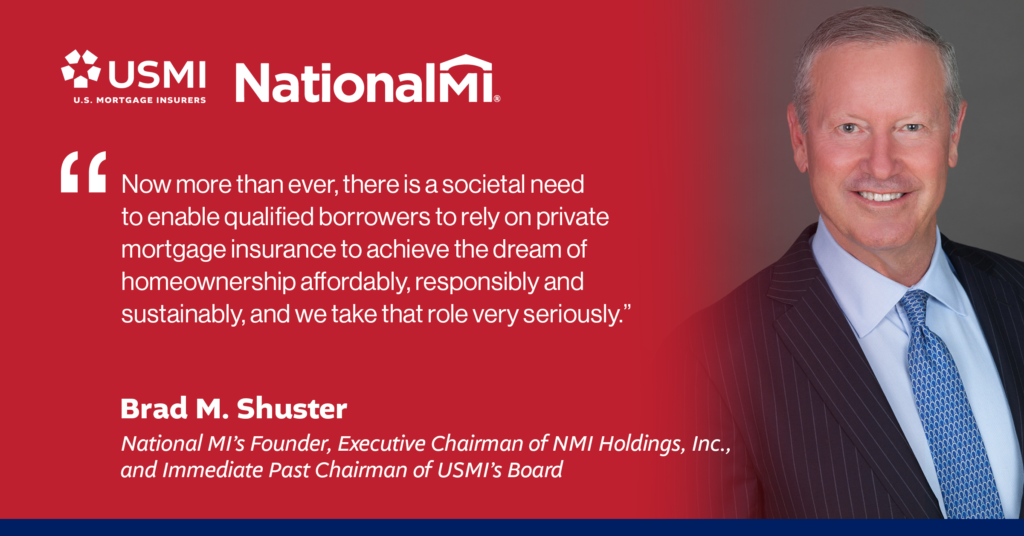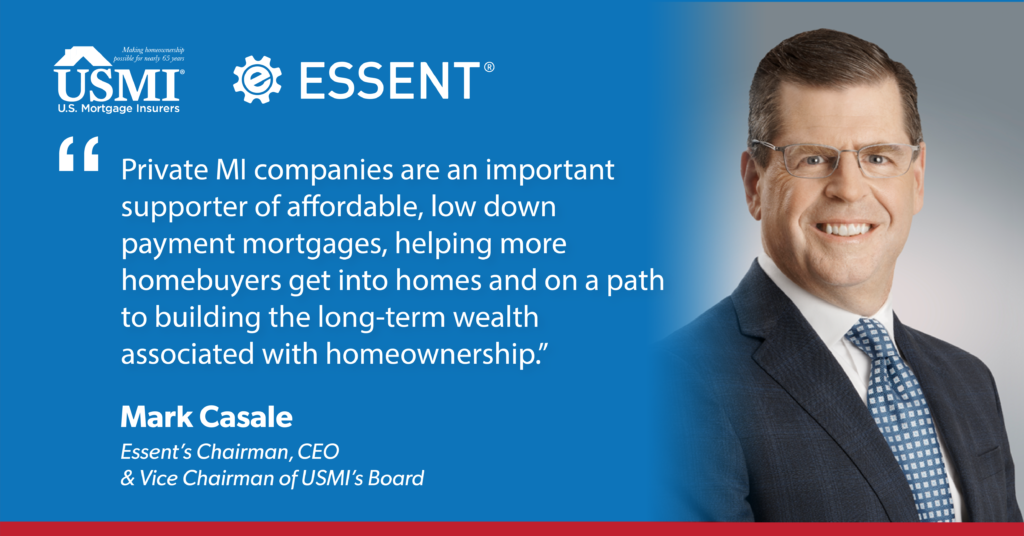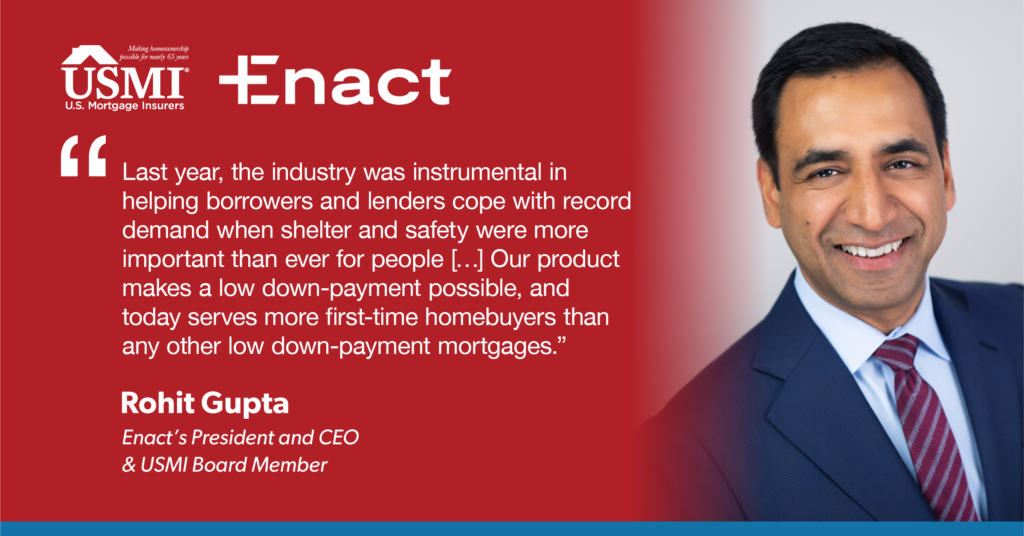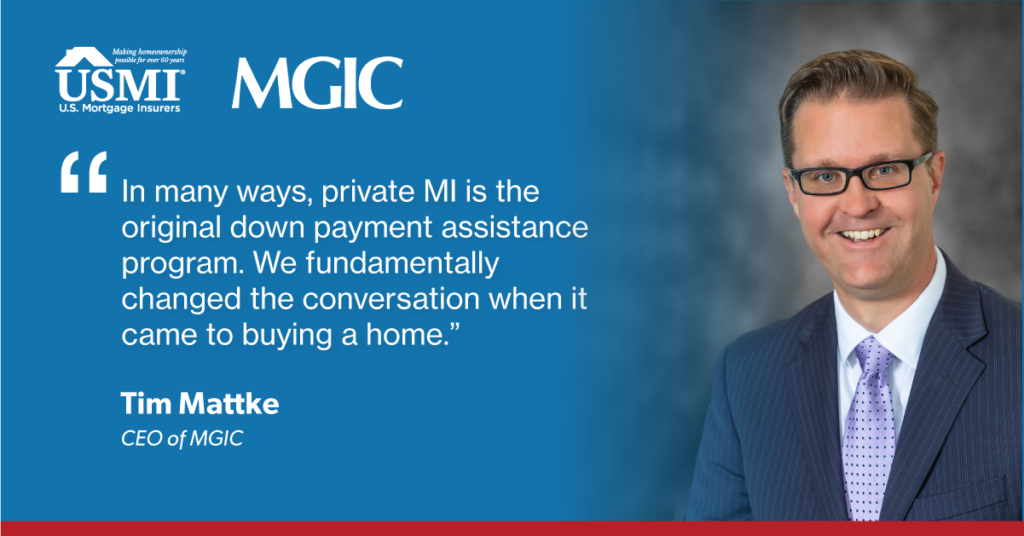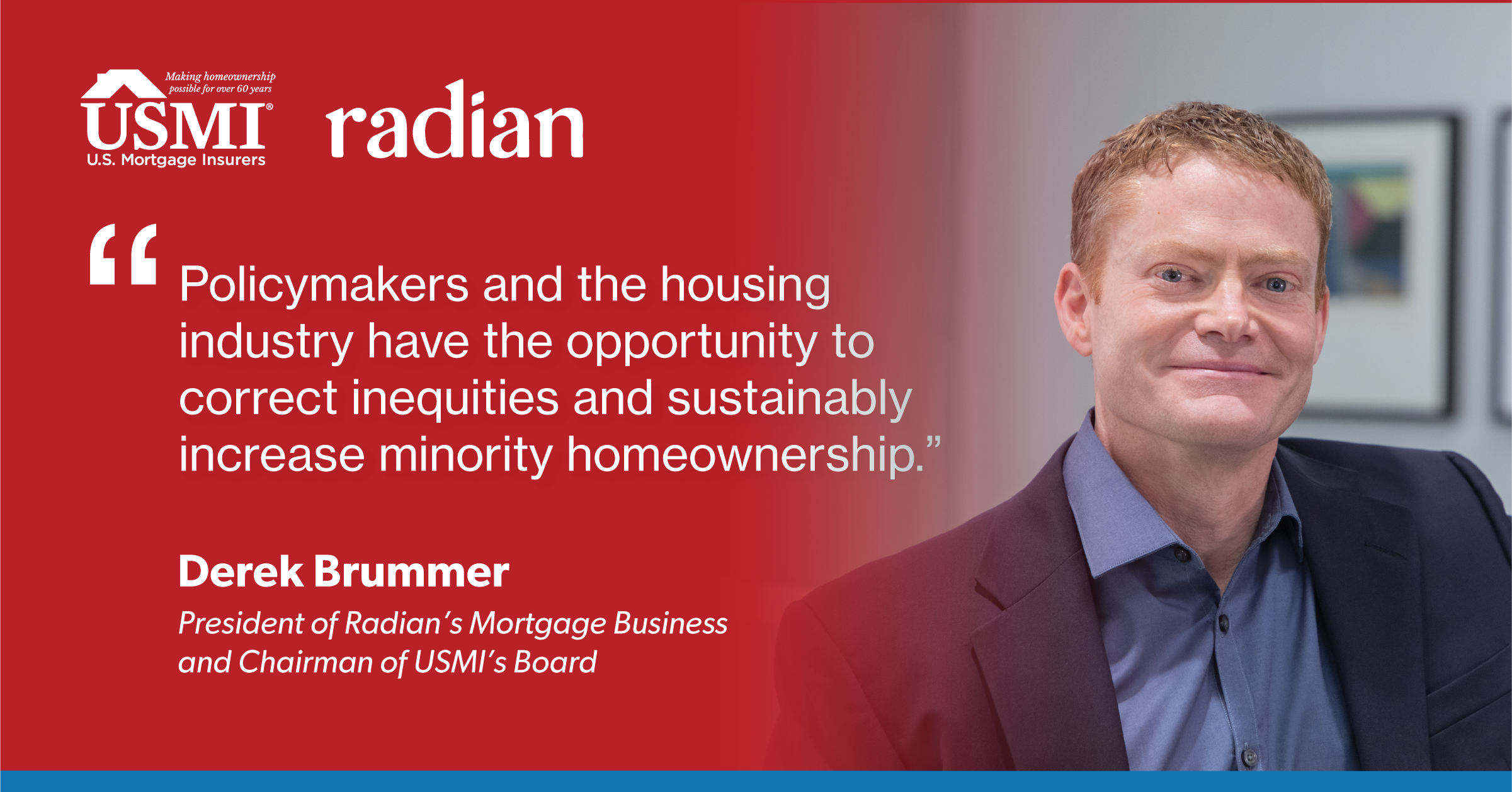USMI’s member spotlight series focuses on how the private mortgage insurance (MI) industry works to address several critical issues within the housing finance system, including expanding access to affordable mortgage credit for first-time and minority homebuyers, protecting taxpayers from mortgage credit risk, and recommendations on ways to reform and enhance the housing finance system to put it on a more sustainable path for the long-term.
This month we chat with Brad M. Shuster, National MI’s Founder, Executive Chairman of NMI Holdings, Inc., and Immediate Past Chairman of USMI’s Board. Founded in 2012, National MI was built to serve borrowers, mortgage lenders, and the housing industry by helping more families achieve affordable and sustainable homeownership. The company continues to implement innovative risk management strategies to ensure lenders’ confidence and help borrowers qualify for low down payment mortgages. National MI consistently demonstrates a track record of strong performance and growth while delivering innovative mortgage solutions.
Below, Mr. Shuster discusses National MI’s views on what the housing finance industry should focus on to ensure access for first-time homebuyers as home prices continue to rise and demand remains robust. He also talks about the findings of the 2021 NextGen Homebuyer Report and how demographic changes are shaping the mortgage industry.
(1) Home-price growth reached a record high in the third quarter of 2021, and demand from homebuyers remains robust despite rapidly increasing home prices. What do you think the housing finance industry should do or focus on to improve first-time homebuyers’ access to the housing market?
We are seeing more and more first-time homebuyers enter the housing market. Housing continues to remain strong and as a result, we are seeing an imbalance of supply and demand in the market, creating entry barriers to prospective homebuyers.
While strong House Price Appreciation (HPA) is great for current homeowners, it creates a moving target for those looking to transition from renting to owning. We see historically low supply, especially in the starter home segment of the market. According to the National Association of Home Builders (NAHB) there was only 2.1 months of supply for existing homes as of November 2021. And a recent National Association of REALTORS® (NAR) report said that housing affordability will be an increasingly important consideration for buyers, but with rents rising by 18.5 percent, buying may be the relatively more affordable housing option for some.
Now more than ever, there is a societal need to help qualified borrowers use private mortgage insurance to achieve the dream of homeownership affordably, responsibly and sustainably, and we take that role very seriously.
The housing finance industry should focus on educating homebuyers about all of the options available for mortgage financing. It is critical that younger, first-time and minority homebuyers – who often lack the resources or intergenerational wealth to afford a 20 percent down payment – are aware of the availability of lower down payment mortgages made possible by the support of private MI.
The industry also needs to educate potential homebuyers on the significant benefits of purchasing a home sooner with a low-down payment, rather than waiting many years to save up for a bigger down payment. Buying a home earlier means that the homeowner can begin to build equity and long-term wealth rather than waiting to enter the market.
The increase to the government-sponsored enterprises (GSEs) conforming loan limits for 2022 recently announced by the Federal Housing Finance Agency (FHFA) will also help open up the market, particularly in high-cost areas.
The private MI industry is well-positioned to help meet the needs of consumers and to drive responsible growth in the mortgage market by facilitating access to sustainable low down payment loans for millions of mortgage-ready borrowers. As part of that effort, our industry is working to raise consumers’ awareness of all mortgage financing options available.
(2) In October 2021, National MI collaborated with Cultural Outreach and the Mortgage Bankers Association (MBA) to study NextGen (ages 22-37) homebuying and economic trends. The 2021 NextGen Homebuyer Report found that this generation exhibits different spending patterns and has a lack of understanding about the homebuying process, especially around down payment and income requirements. Could you tell us more about these trends? What patterns are this generation following when it comes to buying a home? Why do you think that is the case?
National MI is committed to expanding homeownership to all segments of the market, and our work with Cultural Outreach and the MBA on the NextGen Homebuyer Report is an important step in that direction. The NextGen population is significant: it accounts for one out of every three home purchases. The report uncovers the challenges and concerns this group of consumers has about entering the housing market.
The 2021 survey revealed that many NextGen future buyers are unsure whether purchasing a home is a good investment. NextGen buyers also indicate that COVID-19 has had a significant impact on their plans to purchase a house. They perceive a lack of information on personal finance and mortgage loans, so they increasingly are performing their own research, turning to their personal networks as one source.
That provides further evidence that the mortgage finance industry needs to do more to educate the NextGen segment of potential homebuyers on what it takes to be “mortgage-ready” and about their different low down payment options. In particular, we need to dispel the myth that to purchase a home, you must have a 20 percent down payment. In fact, the report indicates that more than half of the survey respondents mistakenly believe that they need to save 20 percent for a down payment. By raising awareness of mortgage financing options available with private MI, many NextGen consumers could come to realize that that homeownership may be closer than they think.
USMI’s most recent “MI In Your State Report” provides an analysis of how long it could take for a borrower to save 20 percent compared to a 5 percent down payment. The report found that saving for a 20 percent down payment could take potential homebuyers 21 years — three times the length of time it could take to save for a 5 percent down payment with private MI. For example, for a household earning the 2019 national median income of $68,703, it would take 21 years to save 20 percent, plus closing costs, for a single-family home. That number increases to 26 years for a Hispanic household and to 32 years for a Black household. Private MI can help reduce that timeframe to seven years. That is quite a difference.
(3) National MI hosted two webinars (here and here) on what diversity means in the mortgage industry, which you presented in collaboration with Tony Thompson from the National Association of Minority Mortgage Bankers of America (NAMMBA). Can you share insights into where our industry is today and how it can leverage diversity as a competitive marketplace advantage?
The newest generation of homebuyers is more diverse than previous generations in terms of race, gender, and socioeconomic status. National MI’s training platform offers relevant educational topics to our lender customers, and part of our success has been quickly shifting and refreshing what we offer to address an evolving set of customer needs. Since the data increasingly shows mortgage consumers are young and diverse, the mortgage industry needs to catch up to the new marketplace, especially in gaining skills and seeking guidance in media and training resources to reach the growing market of new homebuyers. Collaborating with industry partners such as NAMMBA enables us to move the conversation forward.
It is also important that companies take steps to make sure their workforces reflect the diversity in the population of homebuyers. When making one of the biggest financial decisions of their lives, consumers may feel more comfortable working with people who look like them and have a similar culture and background.
Still, the real estate finance industry has made great strides to promote diversity, equity and inclusion (DEI). At National MI, DEI is one of our core values and has always been a part of our company culture. Our efforts to further diversity, equity and inclusion guide us both internally and externally as we work to partner with diverse customers, clients and vendors by providing innovative products and value-driven services.
Brad M. Shuster’s Biography
Brad M. Shuster has served as Executive Chairman of the Board of NMI Holdings, Inc. since January 2019. He founded National MI in 2012 and served as Chairman and Chief Executive Officer of the company from 2012 to 2018.
Prior to founding National MI, Mr. Shuster was a senior executive with The PMI Group, Inc., where he served as President of International and Strategic Investments and Chief Executive Officer of PMI Capital Corporation. Before joining PMI in 1995, he was a partner at Deloitte LLP, where he served as partner-in-charge of Deloitte’s Northern California Insurance and Mortgage Banking practices.
Mr. Shuster holds a B.S. from The University of California, Berkeley and an MBA from The University of California, Los Angeles. He has received both CPA and CFA certifications.




